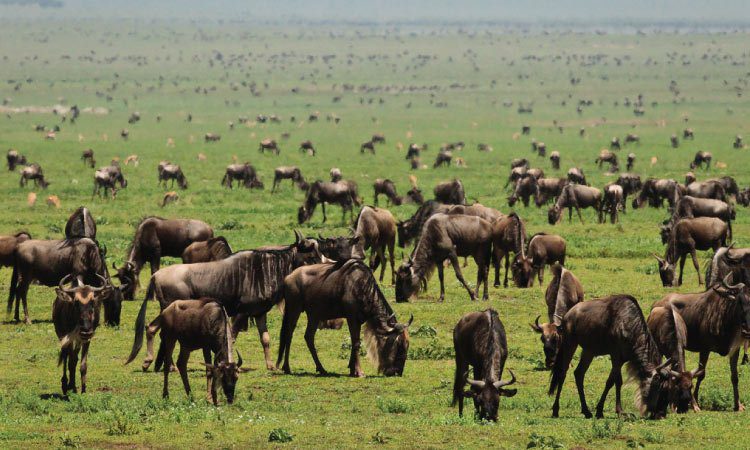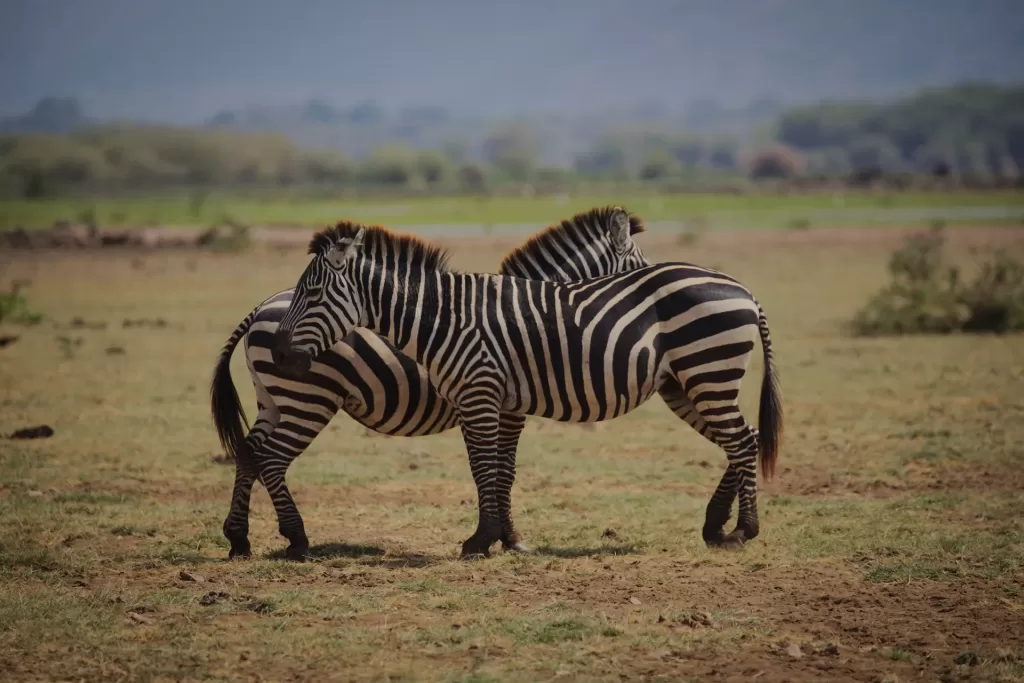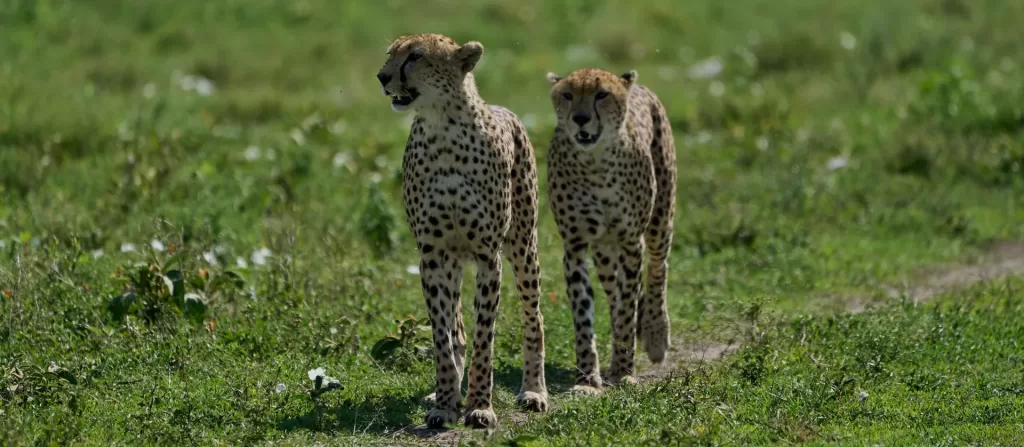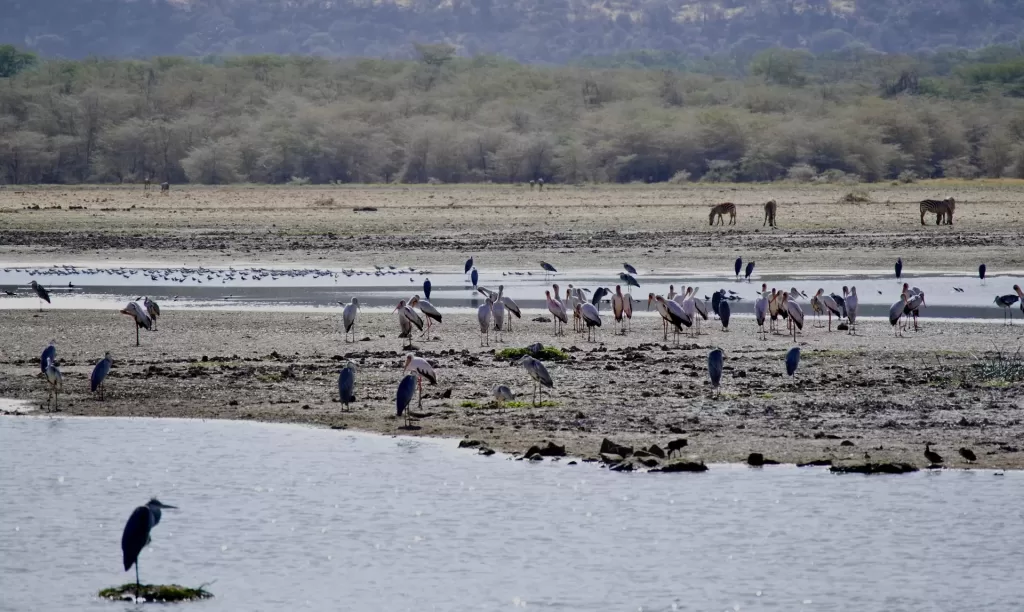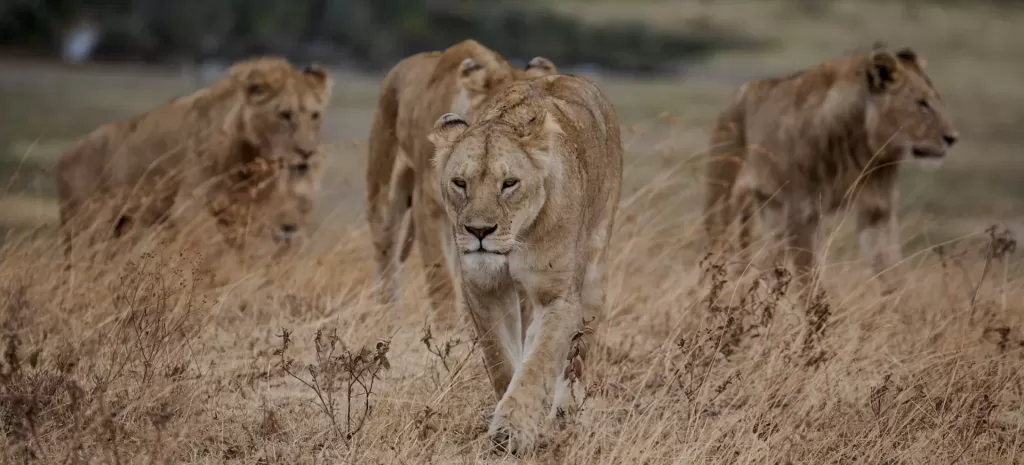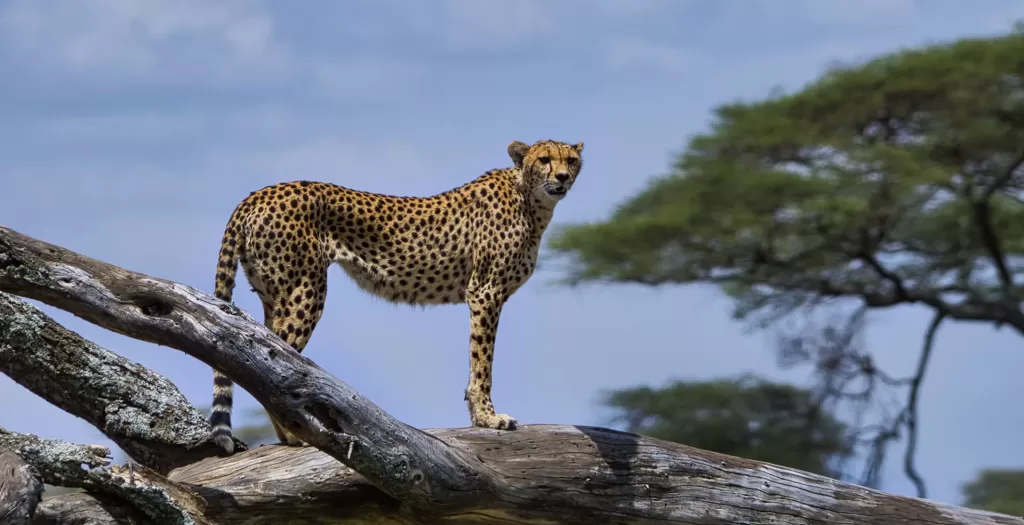Nyerere National Park
Nyerere National Park- Selous Game Reserve – A Wild Dog Haven
Nyerere National Park, situated in the northeastern section of the expansive Selous Game Reserve, was designated for photographic safaris and elevated to national park status in November 2019.
Named after Tanzania’s inaugural president, Julius Nyerere, the park honors his dedication to wildlife conservation and protection.
Encompassing the Rufiji River basin in southeastern Tanzania, Nyerere National Park boasts breathtaking landscapes and abundant wildlife within its 30,893 square kilometers. As an off-the-beaten-path destination, it offers a pristine wilderness experience.
The park is renowned for its diverse wildlife, including rare species such as Puku Antelopes, African wild dogs, and Sable Antelopes. It’s also home to Africa’s famed Big Five—lion, elephant, buffalo, leopard, and rhinoceros—as well as other top predators like cheetah and spotted hyena.
Wildlife enthusiasts will delight in the park’s large elephant and buffalo herds, along with healthy populations of various antelope species such as Hartebeest, Greater Kudu, and Eland. Other species that roam the park include Zebra, Giraffe, Wildebeest, and Warthog.
Birdwatchers will find paradise in Nyerere National Park, with its impressive array of 445 bird species, including the striking purple-crested turaco, majestic yellow-billed stork, and vibrant malachite kingfisher.
Nyerere National Park’s landscape is shaped by the mighty Rufiji River, the largest river in Tanzania, which traverses its center, creating a network of swamps, channels, and lakes that sustain a unique ecological system.
The park is divided into northern and southern sections, each offering distinct vegetation types such as open grasslands, riverine forests, acacia and miombo woodlands, and swamps.
With its rich biodiversity and stunning scenery, Nyerere National Park promises an unforgettable safari experience for nature lovers and adventurers alike.
Things to do in Nyerere National Park
Game Drive
The Game drives in Nyerere National Park are both carried out in the morning hours and afternoon and these take 2 to 3 hours. wild dogs, giraffes, zebras, wildebeest, black rhinos, hippos, buffalos, kudus, hyenas, impalas, and waterbucks among others.
Other species commonly seen are lions, wild dogs, buffaloes, bush-bucks, impalas, elands, baboons, zebras, and greater kudus. Excursion by Safari is a prepared (4×4) vehicle that will permit you to have good photographic opportunities and the chance to explore different sections of the vast park.
Boat Safari
The boat safari along the Almighty Rufiji River that connects to the Indian Ocean is worthwhile in Nyerere National Park. The boat safaris start from 7:00 am – 4:00 pm and 4:00 pm – 6:00 pm and full-day boat safaris from 10:00 am – 6:00 pm. You can watch the animals and bird life.
You can have a half-day boat safari for around 2.5 to 3 hours or a full-day boat safari. Watch hippos and crocodiles going about their day, soaking in the cool waters or basking in the sun.
Look out for overhanging bushes bursting with birdlife, you may spot weaver’s nests and a variety of dazzling bird species. End the excursion moored on a secluded sandbank and enjoy a sundowner while watching kingfishers dart into the glassy surface of the lake to catch their evening meal. You will encounter hippos and crocodiles in good numbers.
Birding
The park has about 350 bird species that have been recorded in the typical miombo woodlands, and the bird life supported by Rufiji swampland is of particular interest. There are a large number of migratory birds from November to April too. Bird species such as the Spur-winged lapwing, African wattled lapwing, White-fronted bee-eater, and Pel’s fishing owl Rare.
Other Bird Species Include African spoonbill, Common White-headed vulture, Pearl-spotted owlet, and a White-headed Lapwing can all be spotted on a bird-watching safari in the park. Between the riparian trees, you can also see trumpeter hornbills and purple-crested turacos.
The sandbanks are home to carmine and white-fronted bee-eater colonies, whilst pairs of fish eagle, palm-nut vulture, ibises, and palm swifts nest in the Borassus palms.
Walking Safari in Nyerere National Park
The walking safari offers a uniquely immersive experience in the wilderness, allowing you to fully engage with the sights, sounds, and scents of the bush in a manner distinct from a traditional game drive. Departing from the Mtemere Gate at 0700 hours, accompanied by an armed ranger, the journey unfolds inward, unveiling the secrets of the terrain.
Guided by a knowledgeable ranger, you have the freedom to pause and examine traces left behind by wildlife, from the majestic stride of a male lion returning to his pride to the delicate imprints of a dove reveling in a momentary dust bath.
You may view close encounters with elephants, perhaps at a watering hole, or guide you on a challenging trek to a kopje’s summit, unveiling the mysteries beyond.
Moreover, the walking safari presents opportunities to spot the “small five” or “little five” inhabitants of the reserve, such as the ant-lion, elephant shrew, buffalo weaver, rhino beetle, and leopard tortoise. It’s an adventure that promises a deeper connection to nature and a more intimate understanding of the wilderness.
Embark on Cultural Tours
Cultural tours in Nyerere National Park are enjoyed in Mloka, a nearby village. Mloka village is only a short drive downriver from Selous River Camp. It’s a personal experience, where you get to interact with the locals and learn about their daily lives. You can either drive around the village or stretch your legs and walk around the village.
Experience the Hot Air Balloon Safari
Embarking on a hot air balloon adventure over the expansive Selous Reserve or Nyerere National Park is an unparalleled experience, truly a once-in-a-lifetime opportunity. You’ll commence your journey with a road transfer to the takeoff site, typically setting off between 6 to 6.15 am.
As the balloons gracefully glide over the sprawling savannah grasslands below, you’ll have the chance to marvel at a diverse array of wildlife.
Lasting approximately an hour, the flight culminates with a delightful “Champagne Bush Breakfast” at the balloon’s landing site amidst the untamed wilderness of Nyerere National Park.
For optimal exploration of the Selous Game Reserve, consider visiting during the dry season from July to October. During this period, vegetation is sparse, and animals congregate around water sources.
If observing the elusive wild dog is your goal, plan your visit between June to August, their denning season. The shorter dry spell from mid-December to March offers ideal conditions for migratory bird sightings, with February being particularly rewarding for witnessing newborns and exceptional birdwatching opportunities.
The wet season, spanning from October to May, provides prime conditions for birdwatching, spotting newborn animals, and capturing vibrant photography against the backdrop of lush, verdant landscapes.
However, it’s worth noting that the heaviest rains typically occur from March to May, resulting in the closure of many lodges and roads during this period.
Where to stay at Nyerere National Park
Sand Rivers is located in the northern part of the Selous Game Reserve, set on a wide curve of the great Rufiji River. The camp boasts of eight bush deluxe en suite rooms with big sofas and plunge pools, each one an open-air cottage of timber and thatch, wide and sun-drenched at the front looking way out over the river, soft and shadowy at the rear for essential heat retreat.
For those looking for more privacy The Rhino House, perched away on a hillside, provides the ultimate cover – a hideaway home for two offering total bush bliss, day and night, with dining a deux, plunge pool, and many other amenities.
Kiba Point also under Sand Rivers, a fabulous base for your private Selous safari. It is a wonderfully private hideaway in the heart of Nyerere. This small 8-bed camp (4 rooms) is booked on an exclusive basis only. It’s the perfect safari house party, your home away from home, with your safari guide, four-wheel drive vehicles, and boats at your disposal, so you can disappear at will on game drives, expeditions up the river, or barefoot fishing off a rock.
Each cottage bedroom has giant views, wide verandahs, spreading beds, a plunge pool, and an indoor and outdoor shower. The thatched and timber mess area is a broad sweep of sofas, a library, a dining room, and a bar that looks out over an infinity pool, into the Selous wilderness.
Other facilities include a swimming pool overlooking the river, and a private chef. Please note that the camp is closed during the rainy season.
Selous Riverside Safari Camp
It is located outside the Selous Game Reserve, less than 10 kilometers or 20 minutes drive from Mtemere Gate and the airstrip. Hidden amongst dense forest and on the banks of the Rufiji River, the Camp provides an excellent base for nature discovery and recreation.
Selous Riverside Safari Camp consists of 10 large tented chalets, overlooking River Rufiji. All chalets are en-suite with private verandahs. Other facilities include the main building that houses the reception, dining, and sitting areas, and the deck with a swimming pool overlooking the Rufiji River.
Rufiji River Camp
It is located on the banks of the Rufiji River, inside the Selous Game Reserve close to the Mtemere entry gate and the airstrip, about 280km or 6 hours drive from Dar es Salaam via Kibiti; access via Morogoro, Uluguru Mountains, and Matembwe gate will take about 11 hours by road.
The camp has 14 en-suite tents including 11 classic individual tents pitched underneath thatched roofs with private verandahs facing the river, and 3 suites each with 2 large tents on a shared platform with a private plunge pool ideal for families and friends.
Each tent has an en suite bathroom with solar-heated water for showering and comfortable beds under mosquito netting.
Other facilities include a library, a restaurant & bar offering a well-stocked bar and international cuisine, all with a view of the river and the sunset, and a swimming pool.
Selous Wilderness Camp
The camp is situated along the palm-fringed edges of the wide Rufiji River, deep in the Selous Game Reserve. It consists of 7 spacious en suite tents under a makuti thatch structure, all with views over the Rufiji River, including 1 family tent (triple), 2 honeymoon tents (bath & outside shower), 2 twin-bedded tents, 2 double-bedded tents, spaced 20 meters apart to ensure privacy and exclusivity.
Other facilities include the mess under makuti thatch, with a mixture of solid wooden furniture and leather sofas, a swimming pool, 24-hour power (inverter, generator & batteries), and battery charging facilities. Other activities include game drives, boat safaris, and walking safaris accompanied by an armed ranger.
Lake Manze Camp
The camp is located in the Selous Game Reserve, on the banks of Lake Manze, about an hour’s drive from Siwandu airstrip. The camp can also be accessed by road. The Lake Manze area is one of the richest game viewing locations in the Selous, both in the dry and wet seasons.
The camp consists of 12 tents spread out in the shade of natural vegetation, along the shores of the lake. The tents are “Meru style” canvas with double zip locking with mesh windows, spacious and furnished with twin or double beds. Each tent has private a verandah and an en suite bathroom behind it. Other facilities include a thatched dining, comfortable lounge, bar, curio shop, and campfire place.
Beho Beho
This is the first camp in the northern sector of the Selous game reserve, perched on the lower slopes of Namikwera Hill overlooking Kipalala Hill, with panoramic views over the Rufiji River floodplain. It is about 70 km or two hours drive from the main northern gate of Matambwe and 110 km or three hours drive from the western gate of Mtemere. It is within a kilometer of Beho Beho airstrip.
This was the first camp in Selous and consists of 8 spacious and airy cottages or bandas built out of local stone & palm leaf thatch open at the front onto a spacious verandah overlooking the unrivaled vistas of the African bush. Each banda is en-suite and furnished with huge comfy chairs, a dressing room, and a spacious bathroom.
Other facilities include open-sided lounges and dining areas together with the cocktail bar, a swimming pool, and a deck, with views along the Kipalala Valley, an ideal place to cool off. The camp is closed from mid-March to early June.
How to get there
Nyerere National Park can be accessed by road or air.
By road; Nyerere National Park can be accessed from Dar es Salaam. It takes 6-7 hours to reach the park depending on the gate used as a point of entry into Nyerere National Park.
- Dar es Salaam to Mtemere Gate: 5- 5.5hrs
- Dar es Salaam to Matembwe Gate: 6-7 hrs
By air, there are several domestic flights to Nyerere National Park. These flights take approximately 1 hour to reach airstrips in Nyerere National Park.
The best time to visit the Nyerere National Park
The best time is during the dry season of July to October. This is when there is thin and scarce vegetation and animals retreat to water sources. If the scarce wild dog is what you are after, June to August is perfect, as this is their denning season.
The wet season runs from October to May, and is best for birdwatching, spotting newborn animals, and photography around the lush, green scenery.
The shorter dry season from mid-December to March is ideal for many migratory birds. However, the heaviest rains fall from March to May, and many lodges and roads close during this period.
ABOUT TRAVELERS LINK AFRICA
Our mission at Travelers Link Africa is to connect people to positive travel experiences enabling them to see the world differently, transforming lives and the communities visited.
To do this we offer authentic travel experiences taking you on both an outer adventure and an inner journey to create memories of a lifetime with Uganda, Kenya, Tanzania, and Rwanda
GET SOCIAL WITH US
Follow our Travelers Link Africa adventures and share your own with us
CONNECT WITH US
We’re here to help, so get in touch with our friendly travel consultants to book your package or add customizations your safari
Our main phone number is
+256 754 062 366
– OR –
